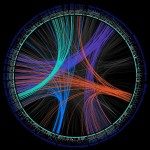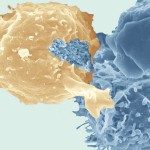Lien vers Pubmed [PMID] – 18216239
Proc. Natl. Acad. Sci. U.S.A. 2008 Feb;105(5):1596-601
Two groups of populations with completely different lifestyles-the Pygmy hunter-gatherers and the Bantu-speaking farmers-coexist in Central Africa. We investigated the origins of these two groups and the interactions between them, by analyzing mtDNA variation in 1,404 individuals from 20 farming populations and 9 Pygmy populations from Central Africa, with the aim of shedding light on one of the most fascinating cultural transitions in human evolution (the transition from hunting and gathering to agriculture). Our data indicate that this region was colonized gradually, with an initial L1c-rich ancestral population ultimately giving rise to current-day farmers, who display various L1c clades, and to Pygmies, in whom L1c1a is the only surviving clade. Detailed phylogenetic analysis of complete mtDNA sequences for L1c1a showed this clade to be autochthonous to Central Africa, with its most recent branches shared between farmers and Pygmies. Coalescence analyses revealed that these two groups arose through a complex evolutionary process characterized by (i) initial divergence of the ancestors of contemporary Pygmies from an ancestral Central African population no more than approximately 70,000 years ago, (ii) a period of isolation between the two groups, accounting for their phenotypic differences, (iii) long-standing asymmetric maternal gene flow from Pygmies to the ancestors of the farming populations, beginning no more than approximately 40,000 years ago and persisting until a few thousand years ago, and (iv) enrichment of the maternal gene pool of the ancestors of the farming populations by the arrival and/or subsequent demographic expansion of L0a, L2, and L3 carriers.




